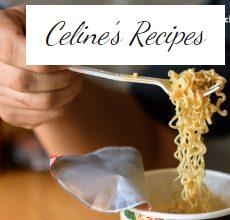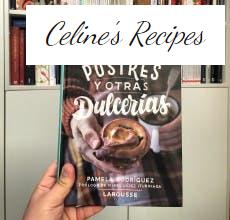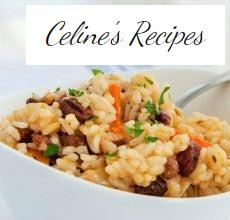How to cook seafood .
Although we usually refer to seafood as a single product, within it there is a wide variety of species that range from tiny shrimps and shrimp to great crayfish or the sublime sea ox , the delicious spider crab , including clams, mussels , razor clams and other species of cocha, that is, molluscs.
The cooking of each species of shellfish is different and you have to pay attention to its own characteristics so as not to destroy them and leave us with yummy.
Whenever possible, we recommend buying fresh versus frozen seafood.

It is tastier, its texture is smoother, but it is also more expensive. If we cannot indulge ourselves, there are good brands of frozen seafood on the market, cheaper, that give very good results and that, unless you have a very fine nose, they hardly differ from fresh seafood.
If we buy fresh seafood , it should be cooked freshly purchased.
And if it is frozen seafood, we let it thaw in the fridge, in a colander placed on a deep bowl (so that it collects the water that forms), and we cook it as soon as it has thawed.
In any case, whenever we go to cook seafood the first step is to buy a quality product, to wash it and drain it well. For the rest of the process we observe the guidelines that we tell you below and cheer up with a delicious seafood salpicón for this Christmas .
Water. Temperature, type and quantity
- When cooking seafood, it is immersed in boiling water.
- The temperature contrast between the shellfish and the water causes a halt in the cooking of this, something we look for but we do not want to make it too long.
- For this reason, the amount of water must be well calculated, since if it is too much it is possible that it will not stop boiling when adding the seafood and, consequently, it will leave us raw inside.
- In the past, it was customary to cook shellfish in seawater, but today this custom is being lost due to the lack of guarantees of cleanliness that this water offers. Now you have the possibility to buy sea salt water. The treatment of this type of water is carried out by means of a cold microfiltering system, without using any type of chemical additive or solvents. So it reaches the client keeping all its properties intact.
- For those who do not want to take risks or do not have sea water on hand, it is best to use fresh water and season it at a rate of 40 g of salt per liter of water to make it look as much like sea water as possible.
- As for the amount of water, it is important that it is abundant and as for the temperature that it is boiling in spurts.
- It can be flavored by adding a bay leaf, but this suits everyone’s taste and some do not use it because it has a fairly pronounced flavor that determines the final result.
 The rule is to increase one minute of cooking time for every 100 grams of weight that the piece of seafood to cook increases.
The rule is to increase one minute of cooking time for every 100 grams of weight that the piece of seafood to cook increases.
The ratio between the amount of water and the amount of seafood
- As with water, we must calculate the amount of seafood we put in the pot well to avoid what we have just mentioned (that the water gets too cold and takes time to recover the boil).
- So it is very possible that it is necessary to cook in batches.
- To serve as a guide, we cook 12 prawns in three liters of salt water each time. When we remove them we wait for the water to boil again before adding the following 12.
Cooking time according to the type of seafood
As we have just mentioned, the shellfish is introduced into the pot when the water is boiling in spurts and the cooking time begins to count from the moment the water returns to a boil. This depends on the size of the shellfish.
- Small-sized shellfish, such as shrimp, shrimp, shrimp, prawns, and langoustines, are removed from the pot when the water, once the shellfish is introduced, starts to boil again.
- Medium-sized shellfish, such as prawns, Norway lobsters, crabs, galleys, crabs, carabineros, and prawns, are left for approximately one to five minutes after boiling, depending on size.
- The cooking time for large seafood, such as sea ox, lobster, lobster and spider crab, is calculated based on weight as indicated in the table below.
- To cook octopus it is best to go through the special ” cook octopus ” that we have on the blog.
| Weight of each piece | Weather |
| 500 grams | 10 minutes |
| 600 grams | 11 minutes |
| 700 grams | 12 minutes |
| 800 grams | 13 minutes |
| 900 grams | 14 minutes |
| 1000 grams | 15 minutes |
Therefore, if we have a lobster of 1.5 kilos (1,500 grams), to give an example, it would be appropriate to cook it for 20 minutes. Or if it is a 2 kilo lobster (2000 grams), the cooking time will increase to 25 minutes.
The chilled seafood once cooked
- Cutting the cooking of the seafood as we remove it from the water is essential to obtain a good result.
- Therefore, before diving into the shellfish in the boiling water and since, depending on the type, the cooking time can be very short, we prepare a deep container with salty water and plenty of ice in which to introduce the shellfish directly from the cooking pot.
- The ratio of salt per liter of water should be the same that we have used for cooking water, that is, 40 grams per liter of water.
- The amount of ice, a lot, especially if we are going to cook a lot of seafood.
- After a minute of bathing in ice water, we can remove the shellfish and drain it on a tray covered with absorbent paper.
- With this we get a smooth, crispy and very pleasant seafood in texture that should be served immediately or, if it is not possible, keep in the fridge covered with a cloth moistened in salt water and not wait more than a few hours to sink the tooth.
- We can take it out a few minutes before serving so that it is slightly tempered, although fresh from the fridge it is impressive, but this, as with everything, is in taste.
We hope that the advice and guidelines that we give you here serve as a guide so that your seafood is delicious and that your eye and practice bring you closer to perfection every day in this matter.
Did you like it? Share it!
Share Tweet Pin it To print
Receive a weekly email with new recipes and yummy recommendations.
Think of Pixels SL as the owner of Recetasderechupete.com, it will use the data you provide in this form only to send you blog updates. We treat your data with respect. For more information see the Privacy Policy . You can change your mind at any time and unsubscribe by clicking on the footer of any email you receive from this website, or by contacting [email protected]. Yummy recipes use Mailchimp as a platform for sending emails. Mailchimp is covered by the EU-US Privacy Shield agreement, approved by the European Data Protection Committee. By submitting this form you agree that your data will be transferred to MailChimp to process it in accordance with its Privacy Policy .
If you liked this article you will like:
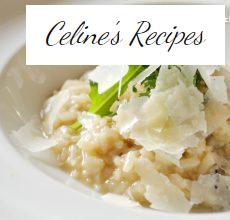
Risotto. History, curiosities and our best recipes
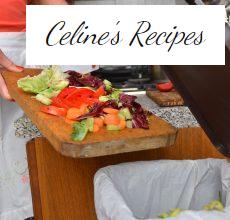
Do not throw food. Tips and tricks to take advantage of remains
